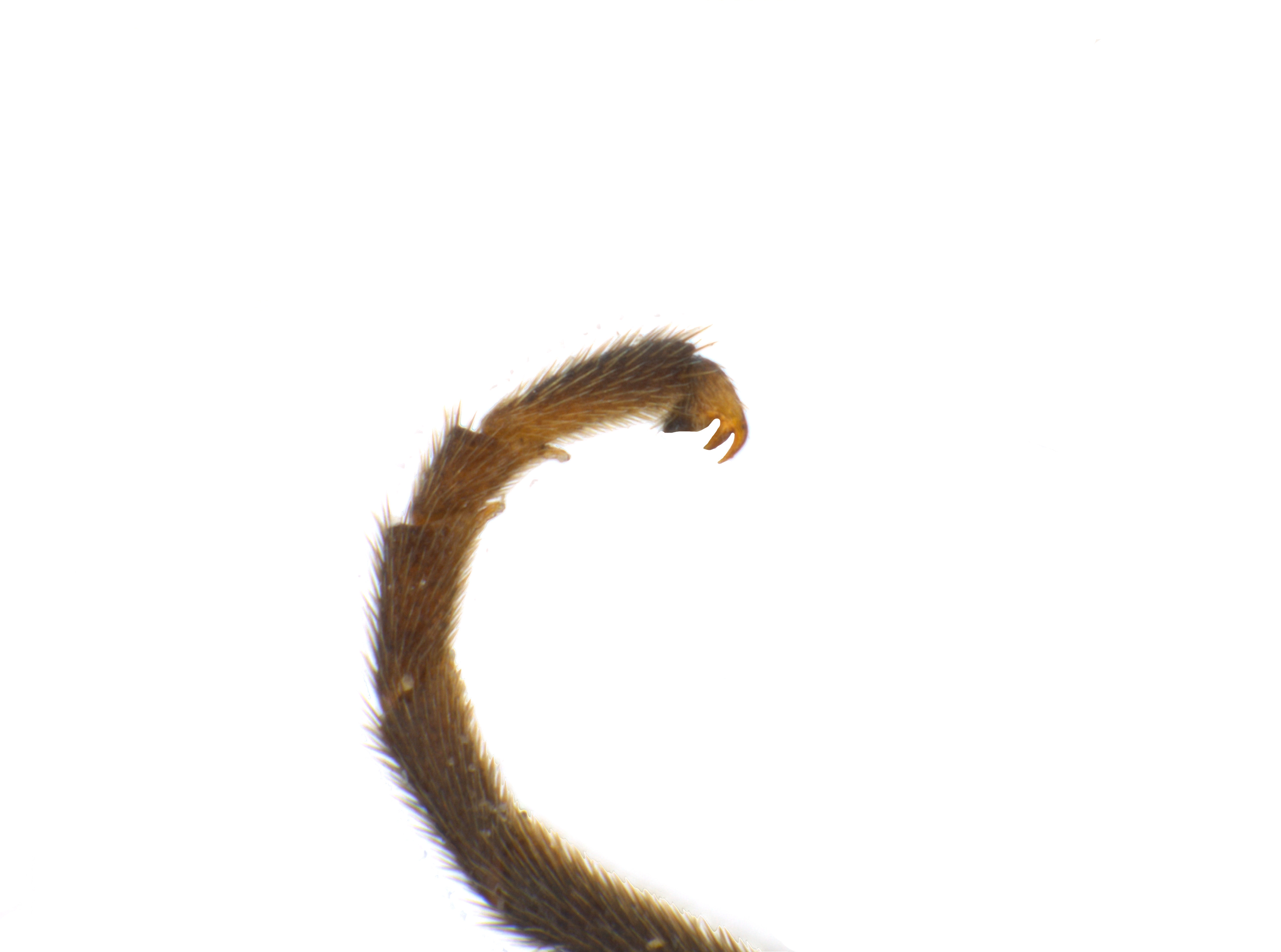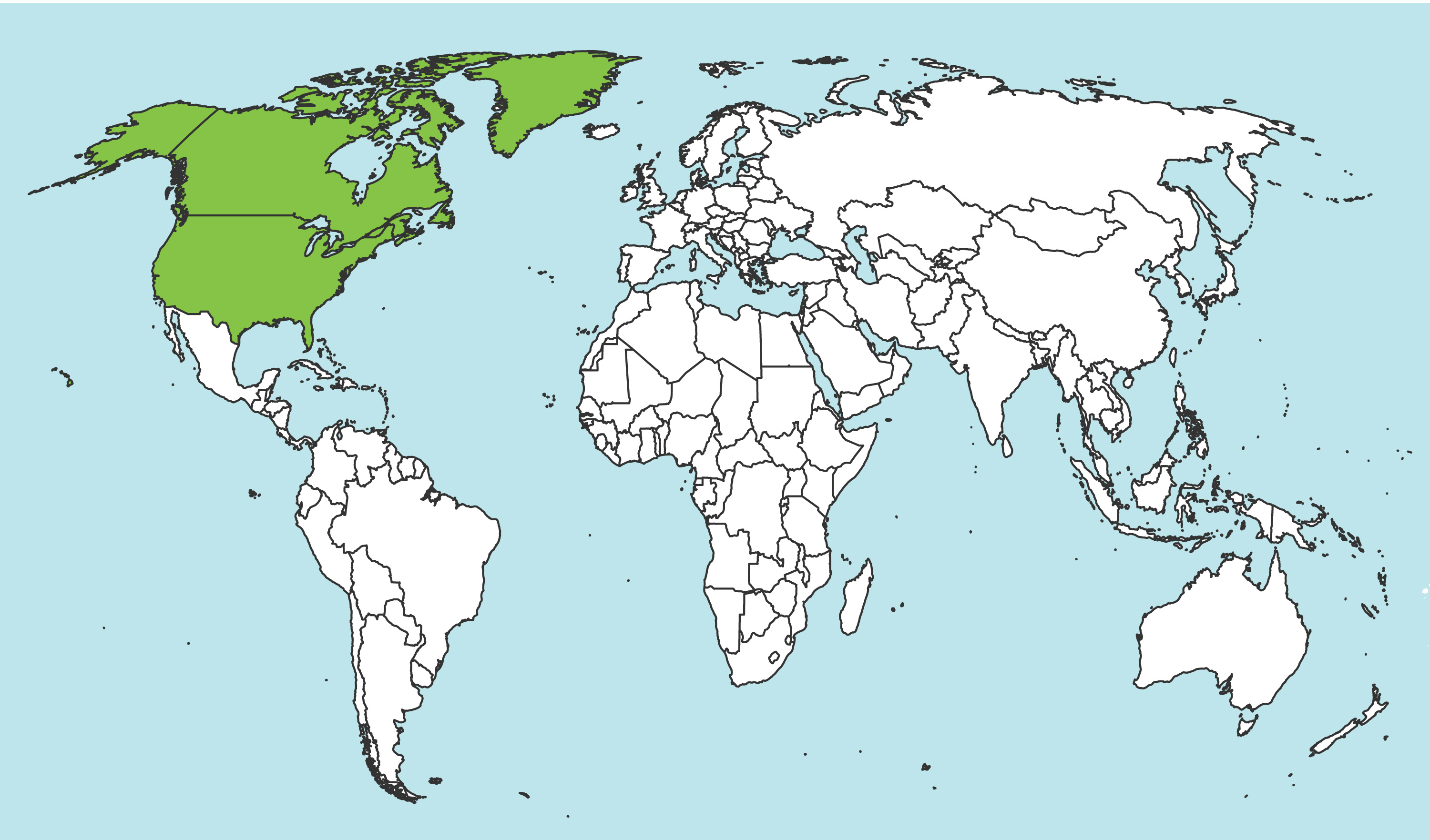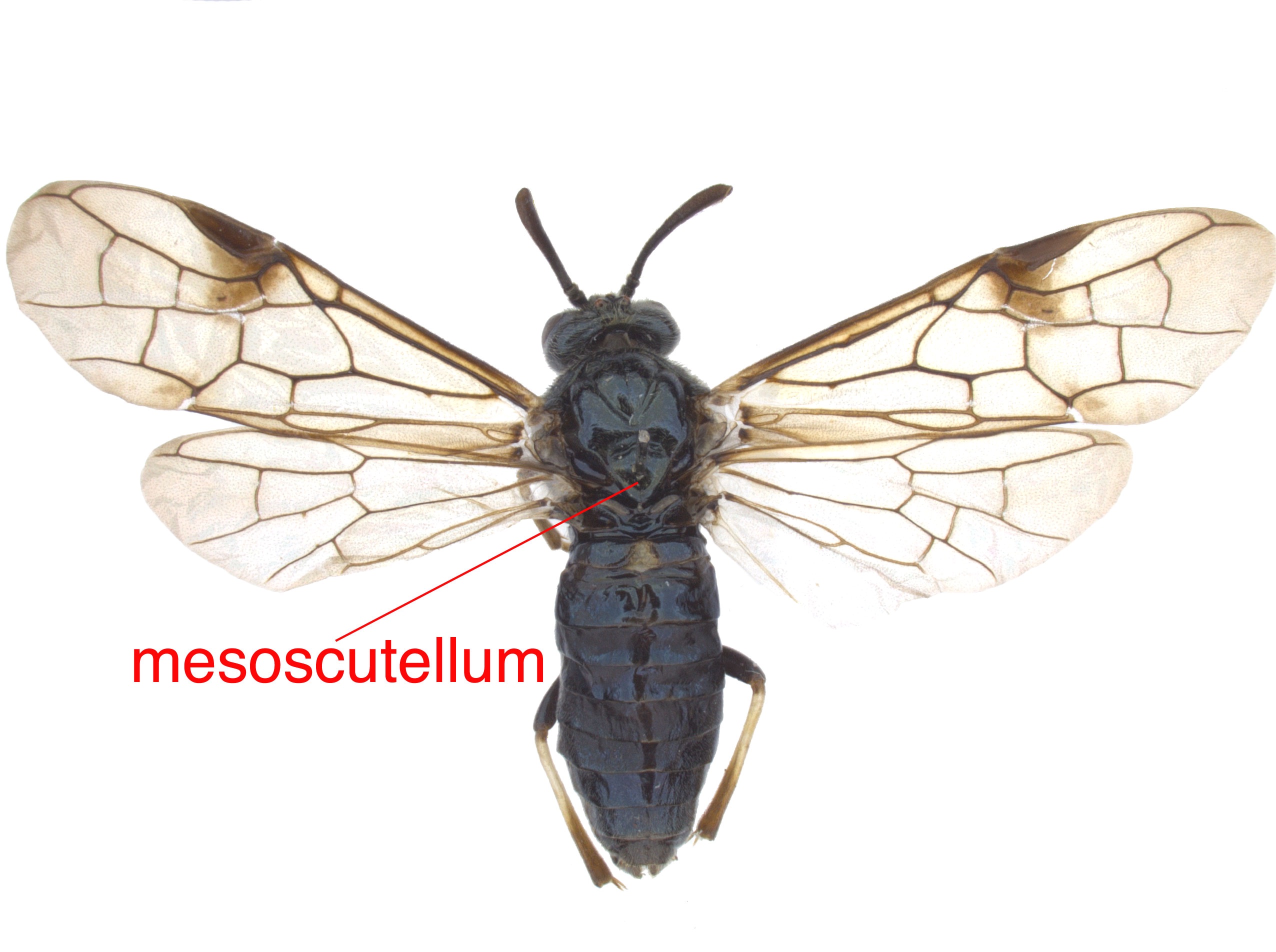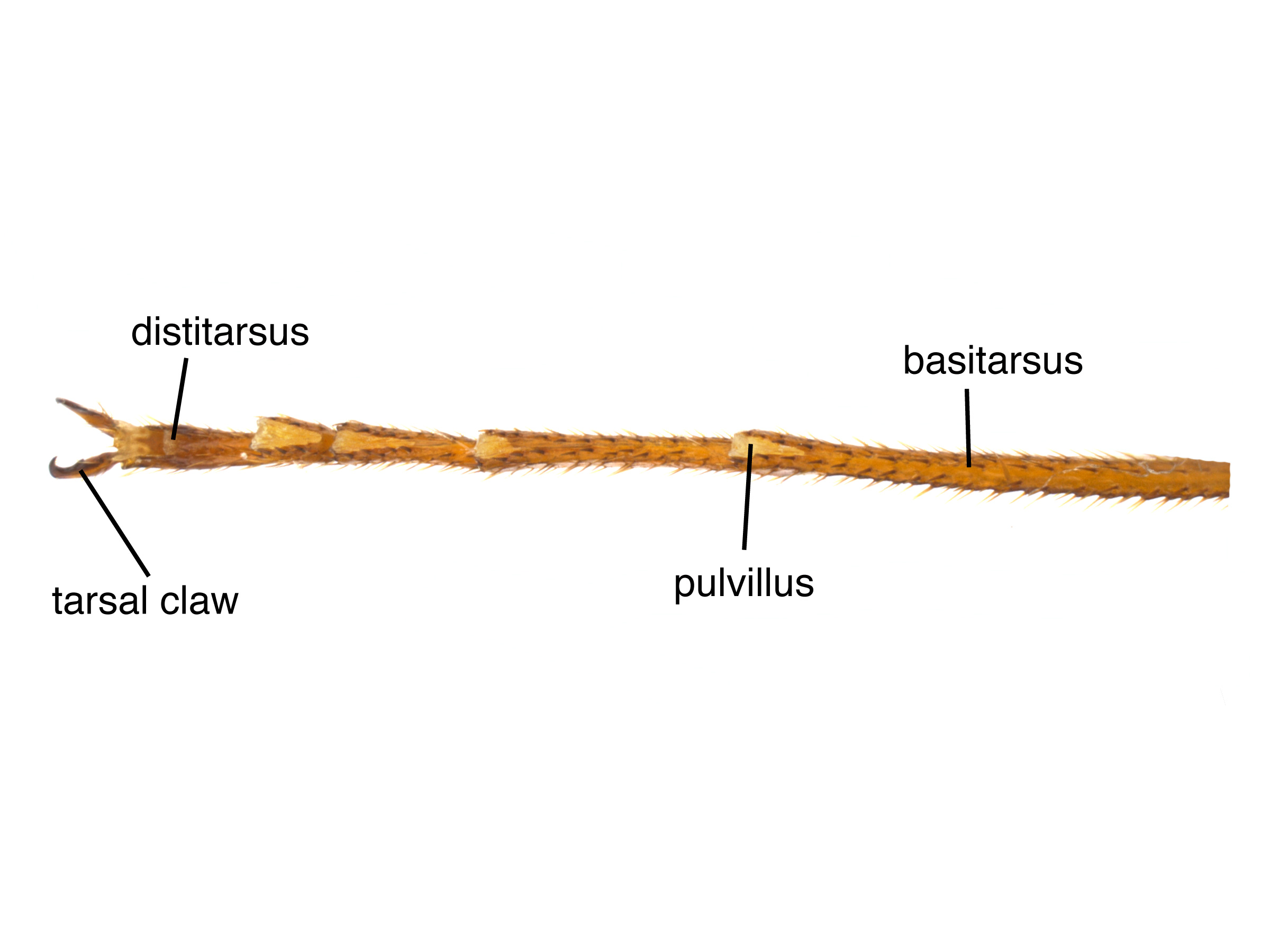Family: Tenthredinidae
Family common name: common sawflies
Subfamily: Blennocampinae
Tribe: Tomostethini
Genus: Tomostethus Konow, 1886
Subgenera: none
The Tenthredinidae are the most species-rich family and are found throughout the world, in all continents but Antarctica. They are known as the “common sawflies.” They can generally be recognized by a cylindrical body and long, segmented antennaeantenna:
the sensory organ emerging from the front of the head, usually between the compound eyes and above the clypeus; includes the flagellum, scape and pedicel
 . Otherwise, they come in a variety of colors, sizes, and forms (Goulet 1992Goulet 1992:
. Otherwise, they come in a variety of colors, sizes, and forms (Goulet 1992Goulet 1992:
Goulet H. 1992. The genera and subgenera of the sawflies of Canada and Alaska: Hymenoptera. Symphyta. The insects and arachnids of Canada. Part 20. Agriculture Canada Publication.).
Sawflies in the subfamily Blennocampinae have a diverse set of life histories and habits. Many species are restricted to subtropical and tropical regions, but the genus is still fairly species-rich in North America. Blennocampinae includes many sawflies that feed on ornamental and forestry crops. This subfamily can be recognized by wing venationvenation:
the network of veins on a wing
and bidentatebidentate:
having two teeth; often used in descrbing mandibles or tarsal claws
 mandibles (Smith 1969dSmith 1969d:
mandibles (Smith 1969dSmith 1969d:
Smith DR. 1969d. Nearctic Sawflies. I. Blennocampinae: Adults and larvae (Hymenoptera: Tenthredinidae). Technical Bulletin, U.S. Department of Agriculture 1397: 1-176.).
Tomostethus is monotypicmonotypic:
describes having only one representative; ex. a genus that includes only one species
in the NearcticNearctic:
describing the region of the Northern Hemisphere that includes North America south through northern Mexico
 region. Tomostethus multicinctus is about 7 mm in length and mostly black with white abdominal stripes (Smith 1969dSmith 1969d:
region. Tomostethus multicinctus is about 7 mm in length and mostly black with white abdominal stripes (Smith 1969dSmith 1969d:
Smith DR. 1969d. Nearctic Sawflies. I. Blennocampinae: Adults and larvae (Hymenoptera: Tenthredinidae). Technical Bulletin, U.S. Department of Agriculture 1397: 1-176.).
There are nine described extantextant:
in existence; opposite of extinct
species worldwide. Two species occur in North America (Konow 1904Konow 1904:
Konow FW. 1904. Ein neues Tenthrediniden-Genus. (Hym.). Zeitschrift fuuml;r systematische Hymenopterologie und Dipterologie 4 (1): 3-4., Taeger et al. 2018Taeger et al. 2018:
Taeger A, Liston AD, Prous M, Groll EK, Gehroldt T, and Blank SM. 2018. ECatSymmdash;Electronic World Catalog of Symphyta (Insecta, Hymenoptera). Program version 5.0 (19 Dec 2018), data version 40 (23 Sep 2018). Senckenberg Deutsches Entomologisches Institut (SDEI), Muuml;ncheberg. https://sdei.de/ecatsym/ Accessed: 28 Jan 2020.).
Subfamily characters
 veins Cu1 and 1m-cu between 120°–150° (Goulet 1992Goulet 1992:
veins Cu1 and 1m-cu between 120°–150° (Goulet 1992Goulet 1992: veins 2A and 3A incomplete (Smith 1969dSmith 1969d:
veins 2A and 3A incomplete (Smith 1969dSmith 1969d:Genus characters
 without hairs and somewhat concaveconcave:
without hairs and somewhat concaveconcave: veins M and 1m-cu narrowed at apexapex:
veins M and 1m-cu narrowed at apexapex: cellcell:
cellcell: M present (Smith 1969dSmith 1969d:
M present (Smith 1969dSmith 1969d: densely haired on surface (Goulet 1992Goulet 1992:
densely haired on surface (Goulet 1992Goulet 1992: and mesepisternummesepisternum:
and mesepisternummesepisternum: (Goulet 1992Goulet 1992:
(Goulet 1992Goulet 1992: simple (Smith 1969dSmith 1969d:
simple (Smith 1969dSmith 1969d:Tomostethus can be confused with similar species in the subfamily Blennocampinae. It can be distinguished from most other genera by the developed pulvillipulvillus:
soft pads used for surface adhesion, located in sawflies on the first 4 segments of the tarsus
 on basalbasal:
on basalbasal:
towards the base; closest to the body
tarsomeres and by the epicnemialepicnemium:
the anterior area of the mesepisternum
area, and from similar genus Tethida by the densely haired mesonotummesonotum:
the second segment of the dorsum of the thorax
 and the hairless basalbasal:
and the hairless basalbasal:
towards the base; closest to the body
area of the clypeusclypeus:
sclerotized area on the front of the head located between the antennal insertions and labrum
 (Goulet 1992Goulet 1992:
(Goulet 1992Goulet 1992:
Goulet H. 1992. The genera and subgenera of the sawflies of Canada and Alaska: Hymenoptera. Symphyta. The insects and arachnids of Canada. Part 20. Agriculture Canada Publication.).
Tomostethus nigritus, the black sawfly, is a pest of Fraxinus excelsior (common ash) and F. angustifolia (narrow-leafed ash) and is responsible for severe defoliation in several locations in Europe (Mitali et al. 2013Mitali et al. 2013:
Mitali E, Vettorazzo M and Battisti. 2013. Defoliation by the ash sawfly Tomostethus nigritus in north-eastern Italy. Sherwood - Foreste ed Alberi Oggi (195): 17-21., Meshkova et al. 2017Meshkova et al. 2017:
Meshkova V, Kukina O, Zinchenko O, and Davydenko K. 2017. Three-year dynamics of common ash defoliation and crown condition in the focus of black sawfly Tomostethus nigritus F. (Hymenoptera: Tenthredinidae). Baltic Forestry 23 (1): 303-308., Verhyede and Sioen 2019Verhyede and Sioen 2019:
Verhyede F and Sioen G. 2019. Outbreaks of Tomostethus nigritus (Fabricius, 1804) (Hymenoptera, Tenthredinidae) on Fraxinus angustifolia lsquo;Raywoodrsquo; in Belgium. Journal of Hymenoptera Research 72: 67-81. https://doi.org/10.3897/jhr.72.38284). Outbreaks of this gregariousgregarious:
describing insects in large groups or aggregations
pest can result in populations in the thousands (Verhyede and Sioen 2019Verhyede and Sioen 2019:
Verhyede F and Sioen G. 2019. Outbreaks of Tomostethus nigritus (Fabricius, 1804) (Hymenoptera, Tenthredinidae) on Fraxinus angustifolia lsquo;Raywoodrsquo; in Belgium. Journal of Hymenoptera Research 72: 67-81. https://doi.org/10.3897/jhr.72.38284).
In North America, Tomostethus feeds on species of Fraxinus (ash) (Goulet 1992Goulet 1992:
Goulet H. 1992. The genera and subgenera of the sawflies of Canada and Alaska: Hymenoptera. Symphyta. The insects and arachnids of Canada. Part 20. Agriculture Canada Publication.). Tomostethus multicinctus specifically feeds on F. americana (white ash), F. latifolia (Oregon ash) (Smith 1969dSmith 1969d:
Smith DR. 1969d. Nearctic Sawflies. I. Blennocampinae: Adults and larvae (Hymenoptera: Tenthredinidae). Technical Bulletin, U.S. Department of Agriculture 1397: 1-176.), and F. pennsylvanica (green ash) (Brakie 2013Brakie 2013:
Brakie M. 2013. Plant guide for green ash ( Fraxinus pennsylvanica ). USDA Natural Resources Conservation Service, East Texas Plant Materials Center. Nacogdoches, Texas. 75964.).
Tomostethus multicinctus, known as the brown-headed ash sawfly, is a pest of ash trees. Females oviposit into the edge of the leaves as the leaves develop, causing wrinkling of the mature leaf. After hatching, larvaelarva:
the immature stage of holometabolous insects
 feed on the leaf tissue, first feeding in small pinholes, then feeding on the entire leaf, leaving behind the veins and skeletonizing the leaf (Cranshaw 2006Cranshaw 2006:
feed on the leaf tissue, first feeding in small pinholes, then feeding on the entire leaf, leaving behind the veins and skeletonizing the leaf (Cranshaw 2006Cranshaw 2006:
Cranshaw WS. 2006. Brownheaded ash sawfly. Insect series, Trees amp; shrubs 5.586. Minnesota Extension Service, St. Paul, MN.). LarvaeLarva:
the immature stage of holometabolous insects
 are light green with brown head capsules (Smith 1969dSmith 1969d:
are light green with brown head capsules (Smith 1969dSmith 1969d:
Smith DR. 1969d. Nearctic Sawflies. I. Blennocampinae: Adults and larvae (Hymenoptera: Tenthredinidae). Technical Bulletin, U.S. Department of Agriculture 1397: 1-176.). After 2–3 weeks of development, mature larvaelarva:
the immature stage of holometabolous insects
 fall to the ground and overwinter in cocoons in the soil. Adults emerge in April. Tomostethus multicinctus is univoltineunivoltine:
fall to the ground and overwinter in cocoons in the soil. Adults emerge in April. Tomostethus multicinctus is univoltineunivoltine:
describing an insect with a life cycle of one generation per year
(Langford and McConnell 1935Langford and McConnell 1935:
Langford GS and McConnell HS. 1935. Biology of Tomostethus multicinctus (Roh.), a sawfly attacking ash. Journal of Economic Entomology 28 (1): 208-210., Cranshaw 2006Cranshaw 2006:
Cranshaw WS. 2006. Brownheaded ash sawfly. Insect series, Trees amp; shrubs 5.586. Minnesota Extension Service, St. Paul, MN.).
World: This genus is known from North America, throughout Europe, and in Turkey, Morocco, Iran, South Korea, and China (Taeger et al. 2018Taeger et al. 2018:
Taeger A, Liston AD, Prous M, Groll EK, Gehroldt T, and Blank SM. 2018. ECatSymmdash;Electronic World Catalog of Symphyta (Insecta, Hymenoptera). Program version 5.0 (19 Dec 2018), data version 40 (23 Sep 2018). Senckenberg Deutsches Entomologisches Institut (SDEI), Muuml;ncheberg. https://sdei.de/ecatsym/ Accessed: 28 Jan 2020.).
North America: Tomostethus multicinctus occurs on the east coast north to Ontario, through the Great Lakes region and south to Missouri and Texas; it also occurs in California and Oregon in the west (Smith 1969dSmith 1969d:
Smith DR. 1969d. Nearctic Sawflies. I. Blennocampinae: Adults and larvae (Hymenoptera: Tenthredinidae). Technical Bulletin, U.S. Department of Agriculture 1397: 1-176.). Tomostethus kirbyi is recorded from Mexico (Konow 1904Konow 1904:
Konow FW. 1904. Ein neues Tenthrediniden-Genus. (Hym.). Zeitschrift fuuml;r systematische Hymenopterologie und Dipterologie 4 (1): 3-4., Taeger et al. 2018Taeger et al. 2018:
Taeger A, Liston AD, Prous M, Groll EK, Gehroldt T, and Blank SM. 2018. ECatSymmdash;Electronic World Catalog of Symphyta (Insecta, Hymenoptera). Program version 5.0 (19 Dec 2018), data version 40 (23 Sep 2018). Senckenberg Deutsches Entomologisches Institut (SDEI), Muuml;ncheberg. https://sdei.de/ecatsym/ Accessed: 28 Jan 2020.).
Map data from: GBIF.org (29 October 2019) GBIF Occurrence Download Tomostethus
Details about data used for maps can be found here.